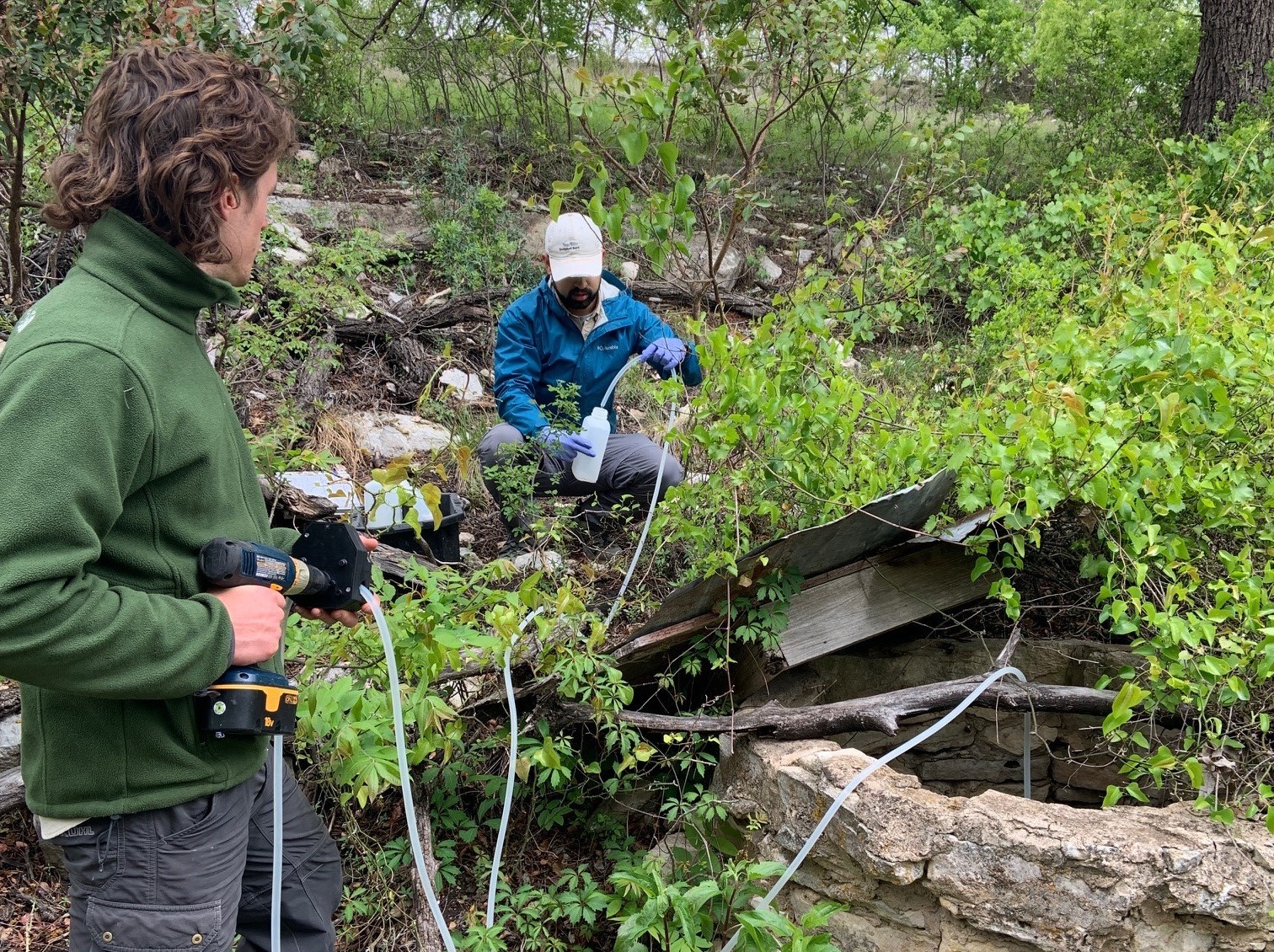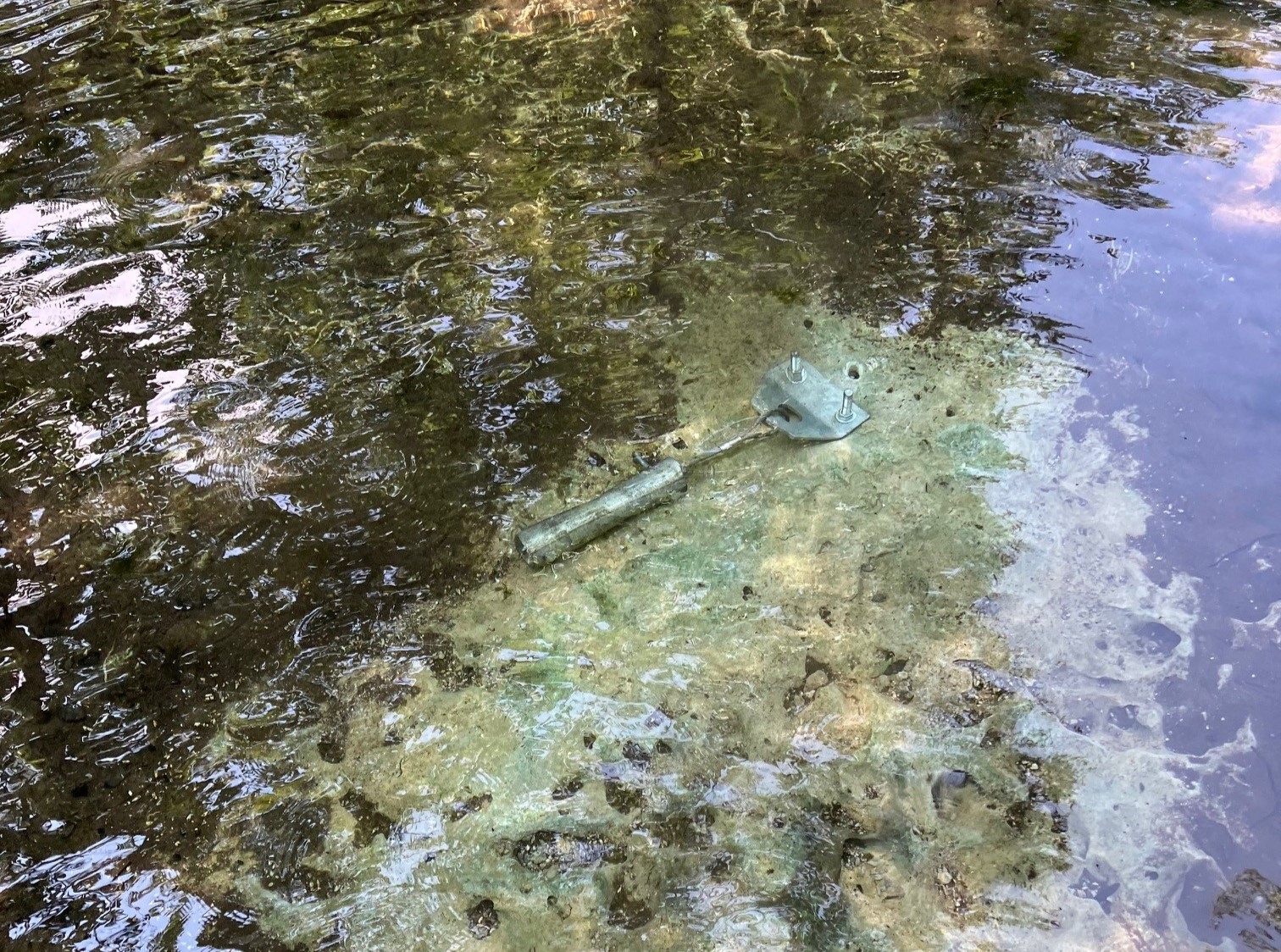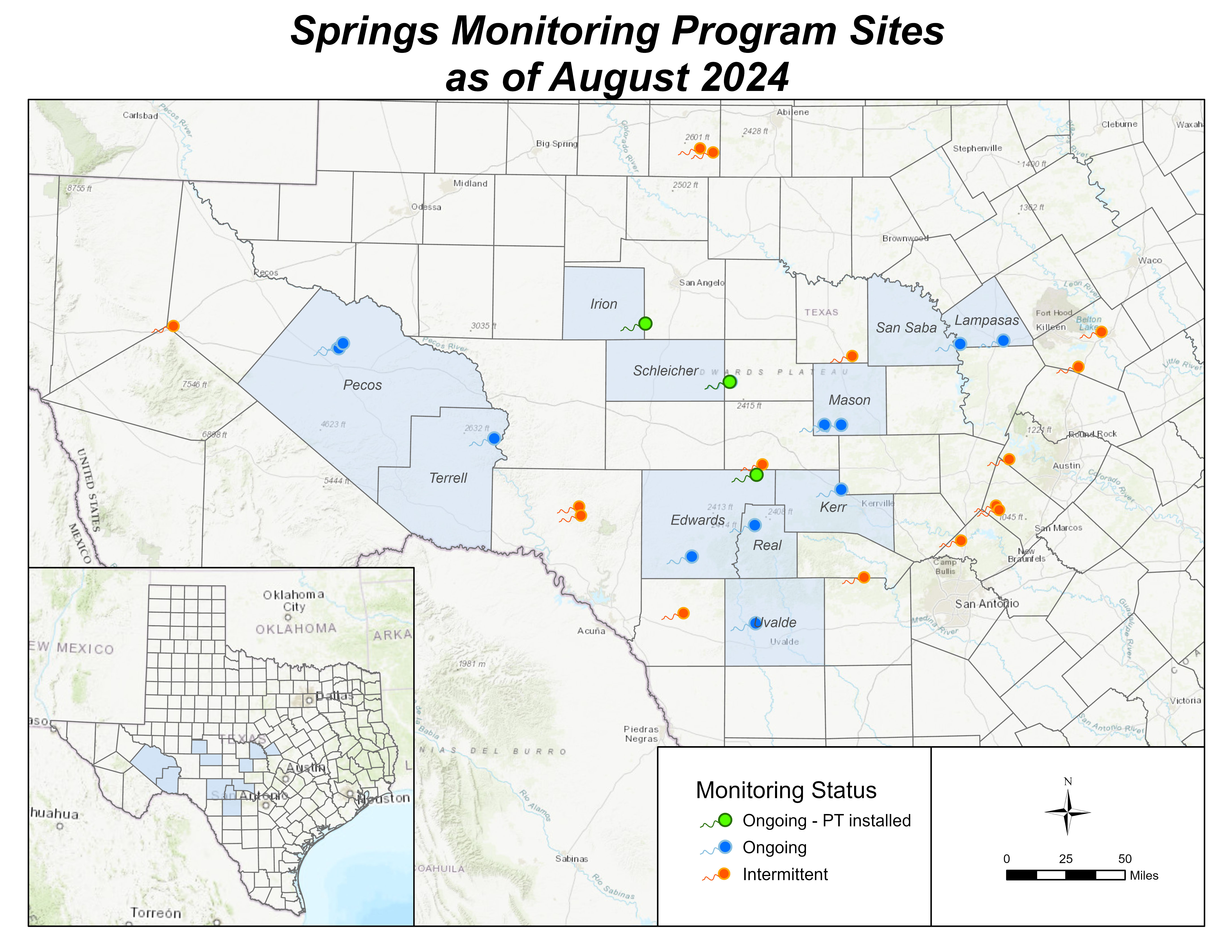Springs Monitoring Program
The Springs Monitoring Program includes ongoing and intermittent observation springs. The number of springs in the program may change to meet the evolving goals, resources, and needs of the program.
Data Collection Activities
Ongoing observation springs are visited annually to measure flow rate and document baseline water quality parameters (pH, temperature, and specific conductivity). Upon an initial visit to a spring, we collect water samples for standard TWDB water quality laboratory analyses and isotopes in order to characterize spring chemistry and aquifer source. We consider additional sampling events for special projects, significant changes in flow rate due to major recharge events, prolonged drought, or other reasons. Data collection activities occur primarily between the months of March and May to mitigate the effects of seasonality on spring conditions but may continue intermittently throughout the year. Where suitable conditions exist, we may also collect stage data and develop high-resolution hydrographs at ongoing observation springs and nearby wells. In such instances, we place a pressure transducer in the spring channel and conduct more frequent site visits.
Intermittent observation springs are visited once or twice for the purpose of documenting a new spring and/or establishing baseline conditions. Intermittent observation springs typically do not meet enough criteria to become an ongoing observation spring. Conversely, we may change the monitoring status of some springs from ongoing to intermittent due to changing criteria.
We use the following criteria to evaluate new springs for our program:
- springs located in aquifers experiencing local or regional water level declines,
- springs located in areas that would expand the program's geographical and hydrogeological footprint and/or with cooperative partnerships available to assist with data collection efforts,
- springs not already included in a routine monitoring program,
- springs included in one or both of Gunnar Brune's texts (R-189 Major and Historical Springs of Texas, and Springs of Texas, Volume 1),
- magnitude of spring flow,
- ease of access and consent from respective landowners and stakeholders, and
- locations with cultural significance, threatened/endangered species or other ecosystem considerations.



| State well number | Spring name | County | Aquifer | Brune's texts | Monitoring status |
|---|---|---|---|---|---|
| 4161401 | Gorman Spring | San Saba | Ellenburger-San Saba | R-189 | Ongoing |
| 4163501 | Hanna Spring | Lampasas | Trinity | SOT | Ongoing |
| 4351403 | Dove Creek Spring | Irion | Edwards Trinity-Plateau | R-189 | Ongoing |
| 4557801 | Diamond-Y Spring | Pecos | Edwards Trinity-Plateau | R-189, SOT | Ongoing |
| 4557903 | Euphrasia Spring | Pecos | Edwards Trinity-Plateau | - | Ongoing |
| 5434203 | Caroline Spring | Terrell | Edwards Trinity-Plateau | R-189, SOT | Ongoing |
| 5515609 | Head of San Saba Spring #1 | Schleicher | Edwards Trinity-Plateau | - | Ongoing |
| 5516431 | Head of San Saba Spring #2 | Schleicher | Edwards Trinity-Plateau | - | Ongoing |
| 5629401 | BMPR Main Spring | Mason | Edwards Trinity-Plateau | - | Ongoing |
| 5630401 | James River Spring | Mason | Ellenburger-San Saba | - | Ongoing |
| 5641801 | Tanner Springs | Edwards | Edwards Trinity-Plateau | SOT | Ongoing |
| 5654403 | Fessenden Spring | Kerr | Edwards Trinity-Plateau | R-189 | Ongoing |
| 6901502 | Morris Spring | Real | Edwards Trinity-Plateau | R-189 | Ongoing |
| 6941205 | Bird Spring | Uvalde | Edwards (BFZ) | R-189, SOT | Ongoing |
| 7013903 | Kickapoo Springs | Edwards | Edwards Trinity-Plateau | R-189, SOT | Ongoing |
| 2946701 | Barrel Spring | Nolan | Edwards Trinity-Plateau | - | Intermittent |
| 2955101 | ALDO Main Spring | Nolan | Edwards Trinity-Plateau | - | Intermittent |
| 4061109 | Triple Springs | Bell | Trinity | - | Intermittent |
| 4764103 | San Martine Spring | Reeves | Igneous | SOT | Intermittent |
| 5463501 | Pecan Springs | Val Verde | Edwards Trinity-Plateau | R-189, SOT | Intermittent |
| 5463801 | House Springs | Val Verde | Edwards Trinity-Plateau | R-189, SOT | Intermittent |
| 5606309 | Wau-Ban-See Spring | McCulloch | Hickory | - | Intermittent |
| 5641603 | Telegraph Spring | Kimble | Edwards Trinity-Plateau | - | Intermittent |
| 5747306 | Heinz Branch Spring no. 1.5 | Travis | Trinity | - | Intermittent |
| 5763403 | Inspiring Oaks Spring | Hays | Trinity | - | Intermittent |
| 5763707 | Park Spring | Hays | Trinity | - | Intermittent |
| 5803903 | Solana Ranch Spring | Bell | Edwards (BFZ) | - | Intermittent |
| 6813103 | Honey Creek Cave Spring | Comal | Trinity | R-189, SOT | Intermittent |
| 6923804 | West Verde Spring | Bandera | Trinity | R-189 | Intermittent |
| 7037801 | Pinto Springs | Kinney | Edwards Trinity-Plateau | R-189, SOT | Intermittent |
| R-189 = TWDB Report 189 - Major and Historical Springs of Texas SOT = Springs of Texas Volume 1 |
|||||
Accessing Data
Click the state well number in the table above to view the summary report for each corresponding spring. Access links to data downloads and scanned documents, including field notes and sketches, at the top left and top right of the summary report, respectively.
Currently, our database cannot accommodate flow rate data. To access spring flow rate data as of September 4, 2024, visit the Texas Water Data Hub.
History
The TWDB initiated the Springs Monitoring Program in 2020 to address the lack of springs data collected and reported on in Texas. We began deploying pressure transducers at select springs in 2022. In 2024 the program received additional funding towards water quality laboratory analyses in conjunction with the Groundwater Quality Program from an Exceptional Item Request to the 88th Legislature.
Prior to its inception, the TWDB did not have an established program to consistently monitor or inventory springs across the state. We sampled springs on a case-by-case basis as part of the Groundwater Quality Program, with flow rate data rarely collected and a monitoring frequency of every four years or longer. Springs sampled under the Groundwater Quality Program are not part of the Springs Monitoring Program.
Goals
The Springs Monitoring Program aims to document the springs of Texas and to monitor short and long-term changes in flow rate and water quality data. We strive to do this on an annual basis but may adjust the frequency of visits over time depending on the number of ongoing observation springs, data collection methods, special studies, cooperative partnerships, and resource availability.
Benefits
Data collected as part of the Springs Monitoring Program will provide
- an improved understanding of the conditions of the aquifers that produce springs and a better picture of overall aquifer health,
- insights into groundwater-surface water interactions and integration into regional water planning and groundwater availability modeling, and
- updates to Gunnar Brune's Major and Historical Springs of Texas and Springs of Texas, Volume 1.
Get in touch
We regularly research new locations to document the springs of Texas and expand the Springs Monitoring Program. However, the number of springs we monitor and requests we can respond to depends on current program resources and cooperation from the public and other stakeholders. We will continue collaborating with groundwater conservation districts and other stakeholders on data collection efforts and partnerships to expand this program.
Please contact Cody Bjornson, Springs Monitoring Program Discipline Lead, at 512-936-0842 if you have any questions, information or would like to request a spring location to be considered for monitoring.
